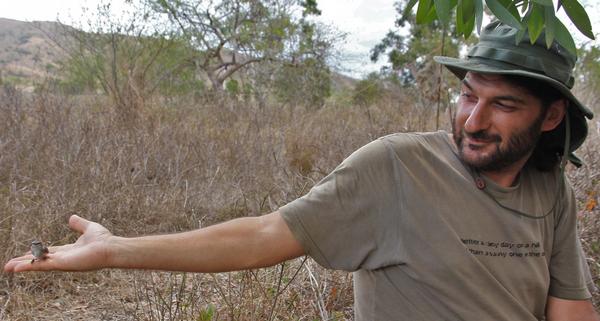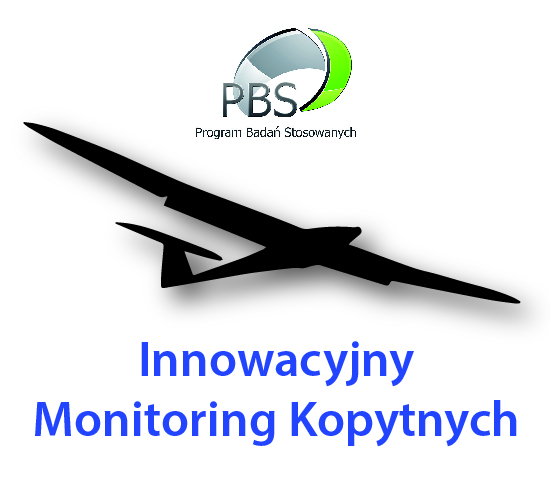Luniak, Maciej (prof. dr hab.)

- Zainteresowania naukowe
- Stopnie i tytuły zawodowe/naukowe
- Droga zawodowa
- Publikacje (spis w 3 załącznikach)
- Najważniejsze zaangażowania badawcze
- Najważniejsze zaangażowania dla praktyki proekologicznej
- Popularyzacja
- Konferencje naukowe
- Zaangażowania w środowisku naukowym
- Dydaktyka i kształcenie kadr
- Prace muzealne
- Wyróżnienia
- Zainteresowania naukowe
Ornitologia i ekologia miasta (patrz p.5.) oraz zastosowania praktyczne (p.6.) i popularyzacja wiedzy (p.8.) w tych dziedzinach.
- Stopnie i tytuły zawodowe/naukowe
Mgr (1959) na Wydz. Biologii i Nauk o Ziemi UW, dr nauk. biol. (1968) j.w., dr hab. spec. ekologia (1978) w Inst. Ekologii PAN, tytuł nauk. prof. (1992) od prezydenta Wałęsy na wniosek Inst. Ekologii PAN.
- Droga zawodowa
1959-1960 – asystent i kier. Pracowni Szczurów w Lab. Dezynfekcji Dezynsekcji i Deratyzacji Min. Zdrowia.
W ciągu całego późniejszego okresu pracy naukowej (od 1960), do przejścia na emeryturę (2004) związany z Muzeum i Instytutem Zoologii PAN (dawniej Inst. Zoologii PAN): 1982-1991 - z-ca d.s. naukowych dyrektora Inst., 1991-2014 - członek Rady Naukowej, 1995-2003 – red. naczelny Acta Ornithologica, 1996-2002 - kierownik Pracowni Ornitol., promocja 6 doktorantów (1991-2013) i 2 magistrantów (na UW, 1985) , od 2004 emeryt na prawach profesora współpracownika MiIZ.
- Publikacje
Razem 442 publikacje:
- N) naukowe ważniejsze (wówczas) ), 100 pozycji w tym: większe prace na oryginalnym materiale – 31; syntezy, monografie, większe rozdz. w podręcznikach – 30; prace przeglądowe i problemowe – 29; redakcje naukowe książek i zbiorów konferencyjnych – 6; powtórne wydania wcześniejszych publikacji - 6; publikacje współautorskie – 34. publikacje zagraniczne lub z udziałem zagranicznych współautorów – 16; publikacje od 2005 (na emeryturze) – 20. Spis poniżej w załączniku „N”
- n) naukowe mniej znaczące, 112 pozycji w tym: recenzje i doniesienia bibliograficzne – 35; streszczenia i konferencyjne inne drobne publikacje – 28; doniesienia, notatki faunistyczne, metodyczne i inne – 27; sprawozdania z konferencji i działalności naukowej – 14; przedmowy do książek naukowych – 3, publikacje współautorskie – 15; publikacje zagraniczne lub z zagranicznymi współautorami – 23;
przedruki i kolejne wydania wcześniejszych publikacji – 2; publikacje od 2005 (na emeryturze – 14.
- P) popularno-naukowe, 230 pozycji - w tym: artykuły w prasie codziennej i w czasopismach – 177; rozdziały w zbiorach książkowych - 29; foldery, broszury i ulotki – 11; książki autorskie i redakcje naukowe książek popularno-naukowych - 5 (2 bis), przedmowy do książek – 3; publikacje współautorskie - 22; przedruki i kolejne wydania wcześniejszych publikacji – 24; publikacje od 2005 (na emeryturze) – 51.
- Najważniejsze zaangażowania badawcze („publ.” - patrz p.4. Publikacje)
5.11. Synurbizacja, fauna/przyroda miasta. Prace kompilacyjne dot. synurbizacji kosa (publ. 1988 i 1990), szerzej zjawiska synurbizacji ptaków i ssaków (6 publ. 1994-2009), także dot. bogactwa gatunkowego i stanu badań nad fauną W-wy (6 publ. 1990-2006), współautorstwo rozdziału w amerykańskim podręczniku kształtowania fauny miasta (publ. 2004). Przegląd badań w ramach atlasów ornitologicznych miast Europy (publ. 2013, w druku 2016?). Od 2014 koordynacja zespołu (ok. 38 uczestników) badającego społecznie przyrodę tego Parku Skaryszewskiego w W-wie, pod kątem jej składu (bioróżnorodności) oraz dla sformułowania wskazań proekologicznych dla urządzenia/użytkowania Parku. Wyniki tych kompleksowych badań (tło socjologiczne użytkowania, warunki abiotyczne, bioróżnorodność) w raporcie (publ. 2015, internet) i monografii książkowej (2016). Ten projekt, nadal trwający, jest krajowym (europejskim?) precedensem tak kompleksowego opisu naukowego przyrody (m,in. bioróżnorodności) śródmiejskiego parku oraz społecznego zaangażowania tak licznej grupy specjalistów w tego rodzaju przedsięwzięcie. Aktualnie w druku (Springer, międzynrodowy podręcznik) rozdział o atlasach awifauny miast europejskich.
5.10. Awifauna W-wy. W latach 1961-1964, 1986-1990 oraz 1999-2000 kier. i bezpośredni udział w zespołowych (kilkudziesięciu uczestników) badaniach, których wynikiem były dwie kolejne monografie awifauny Warszawy – opisowa (1964) i atlas kartograficzny (2001), ok. 20 publikacji naukowych mojego autorstwa/współautorstwa i kilkadziesiąt publ. popularno-naukowych. Badania te pozwalają uznać Warszawę za miasto dotąd najlepiej poznane w kraju pod względem ornitologicznym oraz dały podstawę dla ochrony/kształtowania warszawskiej przyrody. Na marginesie tych badań także (we współautorstwie) wstępna inwentaryzacja ssaków Warszawy (publ. 1990, 1991).
5.9. Reintrodukcja sokoła wędrownego w W-wie (1995-1999). Kierowanie, we współpracy z Radą Programu Restytucji Sokoła Wędrownego przy PZŁ, pomyślnie zrealizowanym projektem, przywrócenia przyrodzie Warszawy lęgów gatunku, nieobecnego tu od lat 1950-tych. Wynikiem reintrodukcji był pierwszy w kraju, po wieloletniej przerwie udokumentowany lęg sokoła wędr. (na Pałacu Kultury) i od tamtego czasu stałe gniazdowanie w W-wie. 4 publ. 1995-2001 i kilka popularno-naukowych, współorganizacja sympozjum międzynarod. w 1995 i redakcja zbioru jego materiałów.
5.8. Zastosowanie skrzynek lęgowych dla kształtowania awifauny zieleni miejskiej (1982-1990). Kier. badań (1984-1985 na zlecenie władz W-wy) na 25 terenach w W-wie i Poznaniu. Wyniki (publ. 1992) określiły przydatność tej metody w warunkach parków miejskich. Ekspertyza-instrukcja (p. 6, publ. 1986) dla praktyki w zieleni miejskiej, 5 publ. popularyzujących (1987-1995).
5.7. Awifauna osiedli mieszkaniowych W-wy (1981-1985). Inwentaryzacje ilościowe, również zimą) 11 terenów stworzyły obraz formowania się awifauny w różnych stadiach powstawania i zagospodarowania osiedli – od etapu budowy do pełnego rozwoju zieleni (3 publ. 1990-1994 – p.7) . Podsumowanie całości podobnych badań w kraju (publ. 1987).
5.6. Awifauna miast Eur. Środkowej i Wsch. (1982-1984). Badania, w ramach programu RWPG, oparte na materiale ankietowym z 27 miast (9 krajów) stworzyły obraz składu, zmian oraz uwarunkowań geograficznych miejskiej awifauny regionu (3 publ. 1985-1990).
5.5. Białołęka Dworska - skład i kształtowanie awifauny terenu przyszłego osiedla mieszkaniowego (1976-1980). Udział w badaniach zoocenologicznych (publ. 1981) oraz zaangażowanie edukacyjne (p. 7. i 11.)w ramach kompleksowego programu mającego na celu stworzenie przyrodniczych podstaw projektu tego osiedla (kier. prof. H. Skibniewska) w peryferyjnej dzielnicy W-wy.
5.4. Awifauna miejskich terenów zielonych (1967-1978). Badania inwentaryzujące (również zimą) awifaunę parków i ogrodów działkowych 51 terenów w W-wie i 11 w miastach Wysoczyzny Siedleckiej (5 publ. 1981-1982). Ten materiał oraz analiza danych z innych miast stworzyły obraz składu i uwarunkowań awifauny różnych typów zieleni miejskiej w kraju, podsumowany w monografii (1983) stanowiącej podstawę habilitacji.
Inwentaryzacja awifauny P. Skaryszewskiego i opis jej zmian w ciągu 50 lat (publ. 2007).
5.3. Rola ptaków w agrocenozach (1971-1973) – krótkotrwały udział w pracach zespołu ornitologów (kier. prof. J. Pinowski), w ramach Międzynarod. Programu Biol. - IBP. Badania nad liczebnością szpaka w W-wie i składem pokarmu jego piskląt (publ. 1977, 1978) oraz nad konsumpcją, wybiórczością pokarmową, trawieniem i zdolnością do drapieżnictwa u gawronów hodowanych w wolierze (publ. 1977).
5.2. Awifauna Wysoczyzny Siedleckiej (1966-1970) – badania przerwane zmianą planów naukowych Instytutu. Wyniki w 3 opracowaniach faunistycznych (publ. 1972-1974), które służą aktualnym badaniom awifauny regionu.
5.1. Awifauna płd. części środkowego biegu Wisły. Badania zapoczątkowane pracą mgr na UW (1958-1959) w okolicy Warszawy, kontynuowane w IZ (1960-1965) na odcinku od ujścia Sanu do Warszawy. Wyniki w 5 publ. 1959-1968, podsumowane pracą dr i obszerną monografią (1971,1974) – dokumentem stanu awifauny ponad 200 km odcinka rzeki w okresie ówczesnego małego jej zagospodarowania. Patrz też p.6.5. dot. warszawskiej Wisły.
- Najważniejsze zaangażowania dla praktyki proekologicznej
Działalność w dużej mierze powiązana z badawczą (patrz p.6.). 46 większych opracowań eksperckich, m.in. z następujących dziedzin: - dla zastosowań w urbanistyce i planowaniu przestrzennym (14 prac), inwentaryzacje i waloryzacje przyrody określonych terenów pod kątem jej ochrony (11 prac), badania pod kątem kształtowania przyrody (9). Spis prac w załączniku „Ekspertyzy”. Czynne zaangażowania, głównie w następujących dziedzinach:
6.6. Awifauna/przyroda zieleni miejskiej. Powiązanie z badaniami naukowymi inwentaryzującymi awifaunę (patrz p.5.4.) i zastosowanie skrzynek lęgowych (p.5.8.). Liczne opracowania i opinie eksperckie (od 1987) i publikacje pop.naukowe (p.7.). Udział w zespole konsultującym projekt rewaloryzacji Parku Skryszewskiego (2004-2005, dla ZOM) - 4 opracowania dla tego zespołu. Od 2014 koordynacja społecznego projektu (patrz p.5.11) „Przyroda P. Skaryszewskiego” realizującego kompleksowe badania użytkowania oraz przyrody martwej i żywej tego parku, m.in. pod kątem praktyki i edukacji ekologicznej.
6.5. Ochrona/kształtowanie przyrody warszawskiej Wisły. Udział w zespołach konsultujących zagospodarowanie rzeki i jej międzywala:
6) „Świder bis” – plan zagospodarowania pasa nadwiślańskiego od ujścia Świdra do Gocławia (1971-1972, kier. inż.arch. J.Sigalin;
5) Czł. zespołu konsultującego przy warszawskiej Okr. Dyr. Gosp. Wodnej (1993-1995);
4) Kierownictwo 7- osob. zespołu autorów opr. „Fauna doliny Wisły” (publ. 2000);
3) Czł. sądu konkursu urbanistycznego „Wiślany Park Przyrodniczy” – (2005-2006);
2) Czł. Komisji d.s. Wisły w Kom. Dialogu Społecznego przy Biurze Ochr.Środ. (2007-2009);
1) Czł. Komitetu Sterującego projektu Life+ “Ochrona siedlisk kluczowych gatunków ptaków Doliny Środkowej Wisły w warunkach intensywnej presji aglomeracji warszawskiej” z (od 2011). 6 opracowań eksperckich dla w.w. Komitetu.
6.4. Ochrona ptaków gniazdujących w budynkach 10 publ. pop.-naukowych i naukowych (2005-2011) – m.in. folder (2005), ulotka (2007) i broszura (2008, 2010) . Kilka ekspertyz i opinii, liczne prelekcje i wywiady prasowe.
6.3. Prace dla planów urbanistycznych W-wy i regionu. 18 ważniejszych opracowań eksperckich, m.in. dla projektów osiedli mieszkaniowych - Białołęka Dworska (1976-1979) w zespole prof. Haliny Skibniewskiej i Nowa Saska Kępa (2006) dla pracowni prof. Stefana Kuryłowicza), dla proekologicznego zagospodarowania terenów zielonych (Ogr. Krasińskich, P.Skaryszewski, Pole Mokotowskie) oraz dla monografii przyrodniczej Gminy Centrum (1997). Publ. naukowa (2011). Patrz też p.7.5.).
6.2. Ochrona lotnictwa przed kolizjami z ptakami. Reprezentant Polski, na 2 światowych (Kingston - Kanada 1969, Moskwa - 1982 i 5 europejskich konferencjach (1969-1982) i raporty z nich dla krajowych władz lotniczych, czł. (1969-1977) europejskiego kom. (Bird Strike Comittee Europe), 5 publikacji popularyzujących (1971-1978).
6.1. Ochrona przyrody Lasu Bielańskiego (od 1963). Dokumentacja ornitologiczna i inne działania dla ustanowienia (w 1973 r.) rezerwatu, trzy inwentaryzacje jego awifauny (publ.1967, 1982, 1991), raport o stanie przyrody Lasu (2002), ulotka (2003), obszerna ekspertyza projektu połączenia ul. Dewajtis w Lesie Biel. z Wisłostradą (2007), 2 wykłady na konferencji n.t. Lasu (2014), opiniowanie dla RDOŚ projektu planu ochrony Lasu (2015 i 2016 – patrz zał. Ekspertyzy), rozdziały o przyrodzie Lasu w 5 książkach (publ. 1982, 1990, 2005, 2009, 2010 + wyd.2013) i w internecie (2013) – patrz p.5. Publikacje.
- Popularyzacja
Główne formy przekazu wiedzy przyrodniczej, związanego na ogół z w.w. badaniami (patrz p.5.) i działaniami dla praktyki proekologicznej (p.6.):
7.1. Publikacje. Od 1962 ogółem 228 pozycji (patrz 4. załącznik „P”). M.in. 177 artykułów w 29 gazetach wielkonakładowych i innych periodykach, 29 rozdziałów w zbiorach książkowych, 3 książki (+ 2 wznowienia) i redakcje naukowe książek.
7.2. Wykłady, prelekcje, wycieczki ornitologiczne. Corocznie kilka (ogółem ponad sto?) dla stowarzyszeń ornitologicznych, gremiów przyrodniczych (np. Pol. Tow. Etologiczne 2007, 2016), Uniwersytetu Trzeciego Wieku, stowarzyszeń turystycznych, specjalistów od zieleni miejskiej i planowania urbanistycznego, lokalnych społeczności (np. warszawskiej dzielnicy Bielany), młodzieży szkolnej.
7.3. Wywiady prasowe. Corocznie co najmniej kilka – np. w latach 2010-2015 – 64 razy: dla prasy drukowanej – 26 razy, telewizji – 20, radia – 18.
7.4. Edukacja młodzieży. Poza w.w. formami (patrz p.7.1.-3.) zorganizowanie i prowadzenie Klubu Ptakolubów w gazecie harcerskiej Świat Młodych (1975-1980), gdzie opublikowałem 62 artykuły, m.in. dwuletni cykl „Kalendarz Ptakoluba”, także klubowe spotkania i bezpośrednia opieka nad Klubem Ptakolubów przy szkole w Białołęce Dworskiej (1976-1978).
7.5. Inne formy. M.in. Co roku liczne konsultacje specjalistyczne. Od 1965 częsta współpraca konsultacyjna z TVP. Opracowanie zestawu gatunków dla serii numizmatycznej NBP „Zwierzęta zagrożone i chronione”, wieloletnia konsultacja poprawności wizerunków na tych monetach (1993-2003) oraz teksty folderów do nich (patrz 5. Publikacje – załącznik „n”). Zaangażowanie w imprezach Festiwalu Nauki – wycieczki i prelekcje (2000-2004). Ostatnio konsultacja projektu „Ptasiej ścieżki” w parkach dzieln. Bielany (realizacja 2015) i teksty do tablic na tej ścieżce.
- Konferencje naukowe
Udział i prezentacje na ponad 30 konferencjach krajowych i międzynarodowych w kraju oraz na 32 konferencjach zagranicznych (1969-2010) – m.in. 3 Międzynarod. Kongresach Ornitol. oraz na 6 konferencjach w USA i Kanadzie, 4 - w ZSRR, 1 – w ChRL. Współorganizacja 2 międzynarod. konferencji RWPG i 2 sympozjów na Międzynar. Kongresach Ornitol.
- Zaangażowania w środowisku naukowym
Krajowe: przez 31 lat prowdziłem (przewodniczący) Koło Warszawskie Sekcji Ornitol. Pol. Tow. Zool. (1961-1991), sekr. Komitetu Ekologii PAN (1981-1982), czł. kapituły Medalu im. Wiktora Godlewskiego (1994-2008), czł. Komitetu Zoologii PAN (1993-2002),
Międzynarodowe: Komitet Ornitol. Stosowanej w ramach Intern. Ornithol. Congress (1986-1991), International Network for Urban Ecology w progr. UNESCO Man and Biosphere (1995-2001), rada redakcyjna. międzynarod. czasopisma Ecologia Urbana (od 1991), czł. INTECOL – Intern. Assotiation f. Ecology (1990-2000), czł. Bird Strike Committee Europe (BSCE) - międzynarod. kom. d.s. kolizji lotnictwa z ptakami (1969-1977).
- Dydaktyka i kształcenie kadr
Promocja 6 doktorantów (1991-2013) i 2 magistrantów (na UW, 1985). Wykłady seminaryjne w MiIZ i uczelniach (np. w 2015 – 2 na UW i 1 na SGGW), w 1989 na Rutgers Iniversity (USA) .
Recenzje 8 prac doktorskich (1988-2012), dorobku 6 kandydatów do habilitacji (1996-2012) oraz dorobku 8 kandydatów do tytułu/stanowiska prof. (1991-2012).
- Prace muzealne
W latach 1960-1972 różnego rodzaju zaangażowania przy zbiorze ornitologicznym MiIZ – zdobywanie (w latach 1960-tych) i preparowanie okazów ornitologicznych, porządkowanie, ewidencja i udostępnianie zbioru, udział w przemieszczeniu zbioru ornitol. z W-wy do magazynu w Łomnie.
- Wyróżnienia
2019 – Nagroda „Kamień Kamionka” przyznane przez Radę Osiedla Kamionek oraz Zarząd i Radę Dzielnicy Praga Południe
2018 – Odznaka Zasłużony dla Warszawy
2017 – Nagroda Miasta Stołecznego Warszawy przyznana przez Radę M. St. Warszawy;
2012 - dyplom uznania Pol. Tow. Zoologicznego „Za wkład w badania nad synurbijnymi populacjami ptaków” ;
2008 - dyplom honorowy Zarz. Gł. Ligi Ochrony Przyrody;
2008? - nagroda Samorządu Woj. Mazowieckiego „...za zasługi dla kultury”;
2007 - dyplom uznania „...za wybitne zasługi dla Polskiego Tow.. Zoologicznego”;
2005 - Nagroda-Medal Mazowieckiej Niezapominajki „...za zaangażowanie i dokonania w zakresie ochrony środowiska przyrodniczego.”;
2003 - dyplom honorowy m.st W-wy za książkę „Ptaki Warszawy 1962-2000” ;
1997 - Złota Odznaka Kraski od Sekcji Ornitol. Polskiego Tow. Zoologicznego „...za kierowanie przez 31 lat Kołem Warszawskim...” w.w. Sekcji;
1995 - honorowe członkostwo Polskiego Tow. Zoologicznego;
1988 - Złoty Krzyż Zasługi (w PAN);
1985 i 1983 udział w 2 zespołowych Nagrodach Min. Administr. i Gosp. Przestrzennej.
1984 - Medal 40-lecia Polski Ludowej.
Załącznik „N” –
Spis 100 publikacji naukowych - znaczniejszych
2020-02-23
Oznaczenia i zestawienie rodzajów publikacji:
---. – autor „Luniak M.”;
[O] większe prace na oryginalnym materiale – 31 (w tym 4 “bis”)
[S] syntezy, monografie, większe rozdz. w podręcznikach – 32 (1 „bis”)
[P] prace przeglądowe i artykuły problemowe – 33 (1 bis)
[R] redakcje naukowe książek i zbiorów konferencyjnych – 6
w tym:
[&] publikacje współautorskie - 35
[z] publikcje zagraniczne lub z udziałem zagranicznych współautorów -17.
[bis] powtórne wydania wcześniejszych publikacji – 6
[net] główna publikacja w internecie - 2
000 nie mam wydruku tej publikacji
2019
---. Urban ornithological atlases in Europe – an updated summary of a recent review. Ecologia Urbana 31 (1-2): 3-4. wyd. w Livorno, Włochy [P]
---. A. M. Bykow (1858-1937) – zapomniana postać w warszawskiej zoologii XIX wieku. Rocznik Muz. Górnośląskiego w Bytomiu. Przyroda. 25 (on line 005): 1-9 [P]
---., Węgrzynowicz A. 2019. Wpływ renowacji parków miejskich na ich awifaunę lęgową – przykład z Warszawy Chrońmy Przyr. Ojcz. 75: 3–15. [P]
2018
---. Wildlife in urban parks. Polish Journal of Landscape Studies. nr 2-3/2018: 28-34.
wyd. Inst. Kultury Europ. UAM, Poznań; Inst Filozofii UW, Warszawa. [P]
2017
---. Jak sprzyjać dzikiemu życiu w parkach miejskich – przesłania przyrodnika. w: Kosmala M. (red.) Dzika przyroda w mieście. Wyd. Polskie Zrzeszenie Inżynierów i Techników Sanitarnych Oddz. Toruń, Toruń, ss.135-142. [P]
---. Urban ornithological atlases in Europe – a review. w: Hedblom M., Murgui E. (red.) Ecology and conservation of birds in urban environments. Springer International Publ., Cham, Switzerland, ss 209-223. [S]
2016
----., Projekt „Przyroda Parku Skaryszewskiego” w latach 2014-2015. w: Romanowski J. (red.) Park Skaryszewski w Warszawie – przyroda i użytkowanie. Wyd. Uniwersytetu Kardynała Stefana Wyszyńskiego, ss. 9-15.
---., Romanowski J. 2016. Projekt „Przyroda Parku Skaryszewskiego” – podsumowanie naukowych wyników badań w latach 2014-2015. w: Romanowski J. (red.) Park Skaryszewski w Warszawie – przyroda i użytkowanie. Wyd. Uniwersytetu Kardynała Stefana Wyszyńskiego, ss. 243-250. [S &]
2015
---. 2015. Przyroda Parku Skaryszewskiego – raport z realizacji Projektu w 2014 r. www.miastoiptaki.pl/raport-ppsk [R net]
2013
---. 2013. Kartograficzne atlasy awifauny miast w Europie – przegląd badań. Ornis. Polonica 54: 40-49. [P]
2011
---., Grzeniewski M. 2010. Nest boxes for the Common Swift Apus apus – experience from Poland. Ecologia Urbana 22: 3-5. [O &, praca na materiale ankietowym]
---. 2011. Fauna w planowaniu urbanistycznym. w: Dornowski W. (red.) Problemy współczesnej architektury i budownictwa. IV Konf. Naukowa ArchBud 2011 (Zakopane, 13-16.09.2011). Wyd. Wyższej Szk. Ekologii i Zarządzania, Warszawa, ss. 203-210. [P]
---. 2011. Ptaki w budynkach – jak z nimi postępować. w: Dornowski W.
(red.). Problemy współczesnej architektury i budownictwa. IV Konf. Naukowa ArchBud 2011 (Zakopane, 13-16.09.2011). Wyd. Wyższej Szk. Ekologii i Zarządzania, Warszawa, ss. 211-217. [P]
& Tigges U., Luniak M. 2011 „Wieża jerzyków” – propozycja dla architektów. w:
Dornowski W. (red.). Problemy współczesnej architektury i budownictwa.
IV Konf. Naukowej ArchBud 2011 (Zakopane, 13-16.09.2011). Wyd. Wyższej Szk. Ekologii i Zarządzania, Warszawa, ss. 369-373. [P & z]
2009
---. 2009. Synurbization – a new phenomenon in animal wildlife. Proc. Intern.
Conference “Passeri in crisi?” (Pisa, Italy, 20 March 2009). Ecologia Urbana 21:
12-14. [S z, wykład inauguracyjny konf.]
---., Węgrzynowicz A. 2009. House and Tree Sparows in Warsaw (Poland) – changes in population numbers and habitat distribution, breeding success. Proc. Intern.
Conf. “Passeri in crisi?” (Pisa, Italy, 20 March 2009). Ecologia Urbana 21: 42-45. [O & z]
2008
---. 2008. Fauna of the big city – estimating species richness and abundance in Warsaw, Poland. w: Marzluff. J. M., Bradley G., Shulenberger E., Ryan C., Endlicher W., Simon U., Alberti M., ZumBrunnen C. (eds.). Urban ecology – an international perspective on the interaction between humans and nature. Springer, New York, pp. 349-354. [S z]
---. 2008. Ochrona ptaków a modernizacja budownictwa. w: Indykiewicz P., Jerzak L., Barczak T. (red.). Fauna miast. wyd. SAR „Pomorze”, Bydgoszcz, ss. 90-95. [P]
--. 2008. Bogactwo gatunkowe i liczebność fauny wielkiego miasta − przykład Warszawy. w: Indykiewicz P., Jerzak L., Barczak T. (red.). Fauna miast. SAR „Pomorze”, Bydgoszcz, ss. 17-26. [S bis, przedruk publikacji w Kosmosie 55: 45-52 (Luniak 2006)]
2007
---., Lesisz M., Marciński A., Nowicki W. 2007. Ptaki Parku Skaryszewskiego w Warszawie w okresie 1957-2006. Notatki Ornitol. 48 (2): 92-105. [O &]
2006
---. 2006. Bogactwo gatunkowe i liczebność fauny wielkiego miasta − przykład Warszawy. Kosmos 55 (1): 45-52. [S]
---. 2006. Ornitologia polska w okresie ostatnich 50 lat. w: Nowakowski J. J., Tryjanowski P., Indykiewicz P. (red.). Ornitologia polska na progu XXI stulecia − dokonania i perspektywy. Wyd. Uniw. Warmińsko-Mazurski, Olsztyn, ss. 11-37. [P]
2005
& Adams L.W., VanDruff L.W., Luniak M. 2005. Managing urban habitats and wildlife. w: Braun C. E. (red.). Techniques for wildlife investigations and management. 6th edition. The Wildlife Society, Bethseda, Maryland, USA, ss. 714-739. [S & z]
---. 2005. Warsaw. w: Kelcey J. G., Reinwald G. (red). Birds in European cities. Ginster Verlag, St. Katharinen, ss. 389-415. [S z]
& Witt K., Mitschke A., Luniak M. 2005. Comparison of common bird populations in Hamburg, Berlin and Warsaw. Acta Ornithol. 40: 139-146. [O & z]
---. 2005. Ochrona kawki Corvus monedula wobec modernizacji budownictwa. w: Jerzak L., Kavanagh S., Tryjanowski P. (red.). Ptaki krukowate Polski. Bogucki Wyd. Naukowe, Poznań, ss. 299-312. [P]
2004
- ---. 2004. Synurbization – adaptation of animal wildlife to urban development. w: Shaw W.W., Harris L.K., VanDruff L. (red.). Urban wildlife conservation, Proc. 4th International Symp., Univ. of Arizona, Tucson, pp. 50-55. [S z]
- ---. 2004 . Seventy years of Acta Ornithol. (1933-2003). Acta Ornithol. 39: 1-8. [P]
- ---. 2004. Siedemdziesiąt lat Acta Ornithol. (1933-2003). Notatki Ornitol. 45: 206-213. [P]
2001
---., Kozłowski P., Nowicki W., Plit J. 2001. Ptaki Warszawy 1962-2000. Wyd. IGiPZ, Warszawa, seria Atlas Warszawy z. 8, 179 pp. [S &, ornitologiczny atlas W-wy]
---., Rejt Ł. 2001. Reintrodukcja sokoła wędrownego Falco peregrinus w Warszawie (1996-2001). Notatki Ornitol. 42: 282-286. [P &]
---, Nowicki W. 2001 Awifauna Warszawy 1962-2000 - podsumowanie inwentaryzacji. w: Indykiewicz P., Barczak T., Kaczorowski G. (red.). Różnorodność i ekologia populacji zwierzęcych w środowiskach zurbanizowanych . Wyd. NICE, Bydgoszcz, ss. 179-183. [S &]
2000
---., Borzęcka I., Chudzicka E., Goszczyński J., Mazgajska J., Mazgajski T., Nowicki W., Pilipiuk I., Romanowski J., Skibińska E., Wiśniewolski W. 2000. Fauna. w: Lickiewicz J., Pawlak J., Pietrusiewicz W. (red.). Wisła w Warszawie. Wyd. Elipsa (ISBN83-907333-7-4), Warszawa. pp. 108-123. [S &]
1999
---., Kozłowski P., Nowicki W. 1999. Fauna. w: Głowacka I. (red.). Monografia przyrodnicza Gminy Warszawa Centrum. wyd. Agencja Wyd.-Reklamowa Dino, Warszawa, ss. 45-49 i 96. [S &]
1998
---. M. 1998. Synurbizacja - dostosowanie się zwierząt do urbanizacji. w: Barczak T., Indykiewicz P. (red.). Fauna miast. Wyd. ATR, Bydgoszcz. pp. 13-19. [S]
---, Rejt Ł. 1998. Restytucja sokoła wędrownego Falco peregrinus w Warszawie. Orlik 33: 14-16. [P &]
---. 1998. Zur Verstädterung von Vögeln und Säugetieren. (4 Internationale Symp. Naturschutz und Verhalten, Finowfurt, 1996). Artenschutzreport 8/1998, ss. 2-5. [P z]
1997
---., Kozłowski P., Nowicki W. 1997. Magpie Pica pica in Warsaw – abundance, distribution and changes in its population. Acta Ornithol. 32: 77-86. [O &]
1996
---. 1996. Synurbization of animals as a factor increasing diversity of urban fauna. w: di Castri F., Younes T. (eds). Biodiversity – science and development. International Forum of UNESCO/IUBS, Paris, 1994). CA International, Paris. pp. 566-575. [P z]
---. 1996. Inventory of the avifauna of Warsaw – species composition, abundance, and habitat distribution. Acta Ornithol. 31: 67-80. [O]
1996
& Caccamise D. F., Luniak M. (red.) 1996. Birds in urban and suburban areas – selected contributions from the XXI Intern. Ornithol. Congress (Wienna, 1994). Acta Ornithol. 31 (1): 1-88. [R & z]
1995
---. 1995. Peregrine Falcon Falco peregrinus in cities - the background for its planned reintroduction in Warsaw. Acta Ornithol. 30: 53-62. [P]
---., Marks J. B. (red.) 1995. European Peregrine Falcon Falco p. peregrinus – its status and future. (Proc. of the Symposium, Ciechocinek-Włocławek, 6-10.11.1994). Acta Ornithol. 30 (1): 1-105. [R z &]
1994
---., Pisarski B. 1994. State of research into the fauna of Warsaw (up to 1990). w: Barker G.M., Luniak M., Trojan P., Zimny H. Proc. of the II European Meeting of the International Network for Urban Ecology (Warsaw, 1992). Memorabilia Zool. 49: 155-165. [S z]
& Gliwicz J., Goszczyński J., Luniak M. 1994. Characteristic features of animal popultions under synurbization ‑ the case of the Blackbird and Striped Field Mouse. w: Barker G.M., Luniak M., Trojan P., Zimny H. Proceedings of the II European Meeting of the International Network for Urban Ecology (Warsaw, 1992). Memorabilia Zool. 49: 237-244. [S &]
---. 1994. Development of bird communities in new housing estates in Warsaw. w: Barker G.M., Luniak M., Trojan P., Zimny H. Proc. of the II European Meeting of the International Network for Urban Ecology (Warsaw, 1992). Memorabilia Zool. 49: 257-267. [O]
1994
& Barker G.M., Luniak M., Trojan P., Zimny H. 1994. Proceedings of the II European Meeting of the International Network for Urban Ecology (Warsaw, 1992). Memorabilia Zool. 49, 287 ss. [R & z]
1992
---. 1992. The use of nest boxes for management of breeding avifauna in urban parks - studies in Warsaw and Poznañ (Poland). Acta Ornithol. 27: 3-19. [S]
---, Haman A., Kozłowski P., Mizera T. 1992. Wyniki lęgów ptaków gnieżdżących się w skrzynkach w parkach miejskich Warszawy i Poznania. Acta Ornithol. 27: 49-63. [O &]
---. 1992. Instytut Zoologii PAN – tradycja, współczesność i perspektywy. Nauka Polska 3/1992 : 119-125. [P]
1991
---. 1991. Awifauna Lasu Bielańskiego w Warszawie 15 lat po ustanowieniu rezerwatu. Parki Narodowe i Rezerwaty Przyrody 10: 167‑181. [O]
- 1990
---. 1990. Investigation of urban ecology by the Institute of Zoology, Polish Academy of Scientes in Warsaw (1974-1990). w: Luniak M. (red.). Urban ecology studies in Central and Eastern Europe. Proc. Intern. Symposium (Warszawa-Jabłonna 24-25.09.1986). Ossolineum, Wrocław, ss. 19-25. [P]
---. 1990. Avifauna of cities in Central and Eastern Europe – results of the international inquiry. w: Luniak M. (red.). Urban ecology studies in Central and Eastern Europe. Proc. Intern. Symposium, Warszawa-Jabłonna 24-25.09.1986). Ossolineum, Wrocław, ss. 131-149. [O]
---., Mulsow R., Walasz K. 1990. Urbanization of the European Blackbird – expansion and adaptations of urban population. w: Luniak M. (red.). Urban ecology studies in Central and Eastern Europe. Proc. Intern. Symposium, Warszawa-Jabłonna 24-25.09.1986). Ossolineum, Wrocław, ss. 186-200. [S &]
---., Pisarski B. 1990. Stan badań nad fauną Warszawy do 1990. w: Zimny H. (red.). Problemy ochrony i kształtowania środowiska przyrodniczego na obszarach zurbanizowanych. Cz. I . Wyd. SGGW-AR, Warszawa. T. 22: 18-27. [P &]
---., Kozłowski P. 1990. Informacje i wskazania ornitologiczne dla planu przestrzennego zagospodarowania Dolnego Mokotowa w Warszawie. w: Zimny H. (red.). Problemy ochrony i kształtowania środowiska przyrodniczego na obszarach zurbanizowanych. Cz. I I. Wyd. SGGW-AR, Warszawa. T. 22: 147-155. [O &]
---. 1990. Zasiedlanie przez ptaki nowych osiedli mieszkaniowych w Warszawie. w: Zimny H. (red.). Problemy ochrony i kształtowania środowiska przyrodniczego na obszarach zurbanizowanych. Cz. I I. Wyd. SGGW-AR, Warszawa. T. 22: 156-169. [O]
---. 1990. Miejskie parki ekologiczne na przykładzie Wielkiej Brytanii. w: Zimny H. (red.). Problemy ochrony i kształtowania środowiska przyrodniczego na obszarach zurbanizowanych. Cz. I I. Wyd. SGGW-AR, Warszawa. T. 22: 170-174. [P]
---., Kropczyńska- Linkiewicz D. 1990. Stan i uwarunkowania zoocenoz w układzie ekologicznym miasta. w: Zimny H.(red.). Funkcjonowanie układów ekologicznych w warunkach zurbanizowanych. Wyd. SGGW-AR, Warszawa 1990. T. 58: 199-209. [& S] ---. 1990. Awifauna miasta – jej skład, zróżnicowanie oraz udział w procesach ekologicznych (na przykładzie Warszawy). w: Zimny H. (red.). Funkcjonowanie układów ekologicznych w warunkach zurbanizowanych. Wyd. SGGW-AR, Warszawa 1990. T. 58: 209-229. [S]
---., Nowicki W. 1990. Występowanie ssaków w Warszawie. w: Zimny H. (red.). Funkcjonowanie układów ekologicznych w warunkach zurbanizowanych. Wyd. SGGW-AR, Warszawa 1990. T. 58: 230-245. [S &]
---. 1990. Ptaki – składnik przyrody osiedli mieszkaniowych w Warszawie. w: Skibniewska H. (red.). Ekologiczne podstawy kształtowania miejskich zespołów mieszkaniowych. Wyd. SGGW-AR, Warszawa 1990. T. 63: 88-94. [P]
---., Jędraszko-Dąbrowska D., Kozłowski P., Nowicki W. 1990. Stan awifauny rezerwatów przyrody w Warszawie oraz wskazania dla jej kształtowania. w: Zimny H. (red.). Wykorzystanie układów ekologicznych w systemie zieleni miejskiej. Wyd. SGGW-AR, Warszawa 1990. T .64: 127-149. [S &]
---., Nowicki W. 1990. Ssaki. w: Biernacki Z., Komorowski J., Wróblewski A. (red.). Środowisko przyrodnicze Warszawy. Wyd. PWN, Warszawa, ss. 277-288. [A]
---. 1990. Badania przyrodnicze w Lesie Bielańskim. w: Biernacki Z., Komorowski J., Wróblewski A. (red.). Środowisko przyrodnicze Warszawy. Wyd. PWN, Warszawa, ss. 600-610. [P]
---., Kozłowski P., Nowicki W. 1990. Work on the bird atlas for Warsaw. w:
Štastny K., Bejček V. (red.). Bird census and atlas studies (Proc. XI Int. Conf. on Bird Census and Atlas Work. Prague, 28.8.-1.9.1989), Praha, ss. 181-185. [P]
---. (red.). 1990. Urban ecology studies in Central and Eastern Europe in Central and Eastern Europe. Proc. of the International Symposium, Warszawa-Jabłonna 24-25 Sept. 1986. Ossolineum, PAN, Wrocław, 235 ss. [R]
N 1988
---., Mulsow R. 1988. Ecological parameters in urbanization of the European Blackbird. w: Quellet H. (red.) Acta XIX Congressus Intenrationalis Ornithol. Univ Ottawa Press, Ottawa, ss. 1787-1793. [S z &]
1987
---., Gałażewska E. 1987. Ptaki terenów zabudowy miejskiej w Polsce – przegląd badań. Notatki Ornitol. 28: 1-13. [P]
1986
---., Jabłoński P., Marczak P. 1986. Ptaki parku Łazienki Królewskie w latach 1954-84. Acta Ornithol. 22: 23-50. [O &]
1984
---. 1984. Najważniejsze wnioski z badań nad awifauną terenów zielonych w Warszawie. w: Szczepanowska H. B. (red.). Wpływ zieleni na kształtowanie środowiska miejskiego. PWN, Warszawa, ss. 229-234. [S]
1983
---. 1983. The awifauna of urban green areas in Poland and possibilities of managing it. Acta Ornithol. 19: 3-61. [S]
1982
& Burakowski B, Luniak M. 1982. Świat zwierząt. w: Baum T., Trojan P. (red.). Las Bielański w Warszawie. Rezerwat przyrody. PWN, Warszawa, ss. 179-261. [S &]
---. 1982. Ptaki rezerwatu Las Bielański w Warszawie. Ochrona Przyrody 44: 219-243. [O]
---. 1982. Aims and possibilities of managing the awifauna of urban green areas in Poland. w: Luniak M., Pisarski B. (red.). Animals in urban environment. Ossolineum, Wrocław, pp. 43-51. [A]
---., Pisarski B. (red.) 1982. Animals in urban environment. Proc. of the Symposium (Warszawa – Jabłonna, 22-24.10.1979) Wyd. Ossolineum, Wrocław, 175 pp. [R &]
1981
---. 1981. Ptaki ( Aves). w: Garbarczyk H., Pisarska R. (red.). Zoocenotyczne podstawy kształtowania środowiska przyrodniczego osiedla mieszkaniowego Białołęka Dworska w Warszawie. Cz. I . Skład gatunkowy i struktura fauny terenu projektowanego osiedla mieszkaniowego. Fragmenta Faun. 26 (31): 509-521. [O]
---. 1981. The birds of the park habitats in Warsaw. Acta Ornithol. 18: 335-371. [O]
1980
---. 1980. Birds of allotment gardens in Warsaw. Acta Ornithol. 17 (20): 297-320. [O]
---. 1980. Present state and general results of censuses in urban green areas in Poland. w: Ölke H. (red.). Bird census work and nature conservation. Proc. VI Intern. Conf. Bird Census Work, VI eeting Eur. Ornithol. Atlas Committee (24-28.09.1979). Univ. Göttingen, Göttingen, ss. 171-175. [P z]
1978
---., Gromadzka J. 1978. Pokarm piskląt szpaka, Sturnus vulgaris L. w Warszawie. Acta Ornithol. 16 (8): 275-285. [O &]
---., Kłosowski T., Kożniewski P., Luniak M., Szokalski M. 1978. Inwentaryzacja ornitologiczna doliny Narwi w gminie Skrzeszew ( woj. warszawskie). Notatki Ornitol. 19: 39-46. [O &]
1977
---. 1977. Konsumpcja i trawienie pokarmów u gawrona, Corvus frugilegus L., w warunkach woliery. Acta Ornithol. 16 (6): 213-240. [O]
---. 1977. Liczebność i produktywność lęgów szpaka Sturnus vulgaris L., w Warszawie. Acta Ornithol. 16 (7): 242-274. [O]
---. 1977. Stan badań nad ptakami miast w Polsce. Wiadomości Ekol. 23: 399-406. [P]
---. 1977. The birds of park biotopes in small towns of Central-Eastern Poland. Acta Ornithol. (translated from Polish). Publ. for the Smithsonian Inst. and National Science Foundation, Washington D.C., by the National Center for Scientific, Technical and Economic Information, Warsaw, Poland, ss. 56-94. [bis O, ang. edycja pracy z Acta Ornithol.14: 99-143 (1974)]
1976
---., Kawęczyński K., Kożniewski P., Luniak M. 1976. Lęg łabędzia krzykliwego, Cygnus cygnus L., na Bagnie Ławki. Przegląd Zool. 20: 109-115. [O &]
1974
---. 1974. Ptaki biotopów parkowych w małych miastach środkowo-wschodniej Polski. Acta Ornithol. 14 (5): 99-143. [O]
---. 1974. Birds of the middle reaches of the Vistula. 15-98. Acta Ornithol. (translated from Polish). Publ. for the Smithsonian Inst. and National Science Foundation, Washington D.C., by the National Center for Scientific, Technical and Economic Information, Warsaw, Poland, ss. 15-98. [S bis, ang. edycja pracy z Acta Ornithol. 13: 17-114 (1971)]
---. 1974. Distribution of Rook, Corvus frugilegus L., colonies in the Siedlce district (Warsaw woivodship. Acta Ornithol. (translated from Polish). Publ. for the Smithsonian Inst. and National Science Foundation, Washington D.C., by the National Center for Scientific, Technical and Economic Information, Warsaw, Poland, ss. 253-270.
[O bis, ang. edycja pracy z Acta Ornithol. 13: 425-450 (1972)]
1973
---. 1973. Expansion of the Blackbird, Turudus merula L. in Warsaw. Acta Ornithol. (translated from Polish). Publ. for the Smithsonian Inst. and National Science Foundation, Washington D.C., by the National Center for Scientific, Technical and Economic Information, Warsaw, Poland, ss. 129-157. [O bis, ang. edycja pracy z Acta Ornithol.12: 177-208 (1970)]
1972
---. 1972. Zmiany w awifaunie Warszawy w latach 1945-1969. Ochr. Przyrody 37: 295-312. [P]
---., 1972. Rozmieszczenie kolonii gawrona, Corvus frugilegus L., w powiecie Siedlce (województwo warszawskie). Acta Ornithol. 13 (11): 425-449. [O]
---. 1972 The occurrence of thw Nightingale, Luscinia megarhynchos Brehm and the Thrush Nightingale Luscinia luscinia (L.) in Warsaw. Acta Ornithol. (translated from Polish). Publ. for the Smithsonian Inst. and National Science Foundation, Washington D.C., by the National Center for Scientific, Technical and Economic Information, Warsaw, Poland, ss. 109-122. [bis O, ang. edycja pracy z Acta Ornithol. 11 (12): 445-460.]
1971
---. 1971. Ptaki środkowego biegu Wisły. Acta Ornithol. 13 (2): 17-113. [S]
---. 1971. Aktualne zagadnienia ochrony lotnictwa przed ptakami. Przegląd Zool. 15:179-183. [P]
1970
---. 1970. Ekspansja kosa, Turudus merula L. w Warszawie. Acta Ornithol. 12 (5): 177-208. [O]
1969
---. 1969. Występowanie słowika rdzawego, Luscinia megarhynchos Brehm i słowika szarego, Luscinia luscinia (L.) w Warszawie. Acta Ornithol. 11 (12): 445-460. [O]
1968
---. 1968. Niektóre problemy związane z metodyką badań liczebności ptaków w środowisku rzecznym. Ekologia Polska ser. B, 14: 161-170. [P]
1967
---. 1967. Zastosowanie badań ornitologicznych przy programowaniu i użytkowaniu miejskich terenów zielonych, na przykładzie Lasu Bielańskiego w Warszawie. w: Plapis W. (red.). Materiały do zagadnień użytkowania urbanistycznego naturalnych środowisk przyrodniczych. Inst. Podstawowych Problemów Planowania Przestrzennego Politechniki Warsz., Warszawa, ss. 118-136. [O]
---. 1967. Charadriiformes (rodziny: Stercoraridae, Laridae, Alcidae). w: Ferens B. Klucze do oznaczania kręgowców Polski. Cz. IVA, Ptaki, Aves Non-Passeriformes. PWN, Warszawa, ss. 297-336. [S]
1964
---. M., Kalbarczyk W., Pawłowski W 1964. Ptaki Warszawy. Acta Ornithol. 8 (6): 175-285. [S &]
---. 1964. Niektóre problemy związane z kształtowaniem się awifauny miast. Przegląd Zool. 8: 162-165. [P]
1963
---. 1963. Badania nad dynamiką liczebności i kierunkami lotów niektórych gatunków Laridae na Wiśle pod Warszawą. Acta Ornithol. 7: 89-113. [O]
Alfredo Attisano, Adiunkt

Contact
Behavioural Ecology Unit
Museum and Institute of Zoology
Main research interests
My research focuses on behavioural and evolutionary ecology of birds and insects. I am particularly interested in how intra- and inter-specific interactions shape the evolution of life-history traits.
Research Gate: https://www.researchgate.net/profile/Alfredo_Attisano
Research projects
Nestlings’ phenotypic polymorphism and co-evolutionary arms race in a host-brood parasite system in New Caledonia. NCN 2016/23/B/NZ8/03082. With Jörn Theuerkauf and Roman Gula
Mate choice and family formation in a cooperatively breeding bird. NCN 2018/29/B/NZ8/02312. With Jörn Theuerkauf, Roman Gula, Magdalena Zagalska-Neubauer and Ralph Kühn
Publications
Attisano, A., Thiel, F., Sato, N., Okahisa, Y., Bolopo, D., Tanaka, K.D., Kuehn, R., Gula, R., Ueda, K. and Theuerkauf, J., 2019. Breeding biology of the Fan-tailed Gerygone Gerygone flavolateralis in relation to parasitism by the Shining Bronze-cuckoo Chalcites lucidus. Journal of ornithology 160: 91-103
De Gasperin O., Duarte A., English S., Attisano A. and Kilner R.M. 2019. The early‐life environment and individual plasticity in life‐history traits. Ecology & Evolution 9: 339-351
Attisano A., Sato N.J., Tanaka K., Okahisa Y., Kuehn R., Gula R., Ueda K., Theuerkauf J. 2018. Visual discrimination of polymorphic nestlings in a cuckoo-host system. Scientific Reports 8: 10359
Bojarska K., Kuehn R., Gazda M.A., Sato N.J., Okahisa Y., Tanaka K., Attisano A., Gula R., Ueda K., Theuerkauf J. 2018. Mating system and extra-pair paternity in the Fan-tailed Gerygone Gerygone flavolateralis in relation to parasitism by the Shining Bronze-cuckoo Chalcites lucidus. PLoS ONE 13: e0194059
Kilner R.M., Boncoraglio G., Henshaw J.M., Jarrett B.J.M, De Gasperin O., Attisano A., Kokko H. 2015. Parental effects alter the adaptive value of an adult behavioural trait. eLife 4: e07340
Attisano, A., Kilner R.M. 2015. Parental effects and flight behaviour in the burying beetle, Nicrophorus vespilloides. Animal Behaviour 108: 91-100
Attisano, A., Murphy J.T., Vickers A., Moore P.J. 2015. A simple flight mill for the study of tethered flight in insects. Journal of Visualized Experiments 106: e53377
Attisano, A., T. Tregenza, A.J. Moore and P.J. Moore 2013. Oosorption and migratory strategy of the milkweed bug, Oncopeltus fasciatus. Animal Behaviour 86: 651-657
Attisano, A., A.J. Moore and P.J. Moore 2012. Reproduction-longevity trade-offs reflect diet, not adaptation. Journal of Evolutionary Biology 25: 873-880
Moore, P.J. and Attisano, A. 2011. Oosorption in response to poor food: complexity in the trade-off between reproduction and survival. Ecology & Evolution 1: 37-45
IMBIO

Tytuł projektu: Integracja i mobilizacja danych o różnorodności biotycznej Eukaryota w zasobach polskich instytucji naukowych (IMBIO)
Źródło finansowania: Program Operacyjny Polska Cyfrowa, poddziałanie 2.3.1 „Cyfrowe udostępnienie informacji sektora publicznego ze źródeł administracyjnych i zasobów nauki” (Typ II projektu: Cyfrowe udostępnienie zasobów nauki)
Ogłoszenie o decyzji CPPC: https://cppc.gov.pl/aktualnosci/1659-zakonczenie-oceny-merytorycznej-wnioskow-z-poddzialania-2-3-1-11-nabor-ii-runda
Nr projektu: POPC.02.03.01-IP.01-00-011/19
Budżet: 18 763 954 zł
Okres realizacji: 1. stycznia 2020 – 31. grudnia 2022
Wykaz Partnerów:
Akademia Pomorska w Słupsku
Instytut Botaniki im. W. Szafera Polskiej Akademii Nauk
Instytut Oceanologii Polskiej Akademii Nauk
Instytut Ochrony Przyrody Polskiej Akademii Nauk
Instytut Systematyki i Ewolucji Zwierząt Polskiej Akademii Nauk
Muzeum Górnośląskie w Bytomiu
Morski Instytut Rybacki – Państwowy Instytut Badawczy
Muzeum i Instytut Zoologii Polskiej Akademii Nauk
Uniwersytet Gdański
Uniwersytet Jagielloński
Uniwersytet Łódzki
Uniwersytet Opolski
Uniwersytet Marii Curie-Skłodowskiej
Uniwersytet Rolniczy im. Hugona Kołłątaja w Krakowie
Uniwersytet Śląski w Katowicach
Uniwersytet w Białymstoku
Uniwersytet Wrocławski
Uniwersytet Warszawski (Lider)
Opis Projektu:
Projekt powstał w ramach konsorcjum 18 instytucji naukowych, współpracujących w Krajowej Sieci Informacji o Bioróżnorodności (KSIB). Głównym celem jest otwarcie dostępu do danych o różnorodności biologicznej organizmów jądrowych (Eukaryota), znajdujących się w zasobach instytucji partnerskich. Będzie on realizowany poprzez digitalizację i udostępnienie danych nie istniejących dotąd w formie cyfrowej lub pozostających poza siecią.
Mobilizacja obejmie cenne zbiory okazów flory i fauny z kraju i innych rejonów świata, kartoteki, dane bibliograficzne i niepublikowane oraz bazy danych. Integracja danych na poziomie merytorycznym i strukturalnym zapewni ich techniczną spójność i jakość naukową oraz możliwość ich późniejszego wykorzystania w szerokim zakresie możliwych zastosowań. Powstanie system informatyczny, służący do zarządzania danymi i wizualizacji efektów działań, a także komunikacji z zewnętrznymi aplikacjami i repozytoriami, w tym Global Biodiversity Information Facility (GBIF). Integracja będzie dotyczyć organizacji i standaryzacji danych w zakresie taksonomii oraz informacji przestrzennej, niezbędnych dla zapewnienia wartości merytorycznej.
Projekt dostarczy narzędzi wspierających profesjonalistów i specjalistów-amatorów w zakresie gromadzenia danych i digitalizacji, a także redukując koszty digitalizacji poprzez pracę w grupie (również działania typu crowd-sourcing). Wśród zgromadzonych danych znajdą się także informacje o gatunkach szczególnego zainteresowania (inwazyjne, szkodliwe, zagrożone, chronione), istotne dla ochrony przyrody, środowiska, rolnictwa, leśnictwa i innych sfer życia publicznego (np. ochrona zdrowia, edukacja).
Marta Maziarz, Dr

Dr Marta Maziarz
Museum and Institute of Zoology
Polish Academy of Sciences
Ten adres pocztowy jest chroniony przed spamowaniem. Aby go zobaczyć, konieczne jest włączenie w przeglądarce obsługi JavaScript.
Ten adres pocztowy jest chroniony przed spamowaniem. Aby go zobaczyć, konieczne jest włączenie w przeglądarce obsługi JavaScript.
Main research interest
I am interested in the ecology and behaviour of animals, their adaptations and interspecific interactions. My recent research focuses on songbirds and social insects in the primeval part of the Białowieża Forest (Poland), and I also study bird ecology in human-transformed woodlands and farmland in Great Britain. Currently, I lead a project on the relationships between nesting wood warblers Phylloscopus sibilatrix and ants that colonise bird nests to raise their broods, funded by the National Science Centre, Poland; project title: “Colonisation of bird nests by ants: mutualism, commensalism or coincidence?” (2017/26/D/NZ8/01063).
ORCID iD: https://orcid.org/0000-0002-2921-5713
Scholar Google: https://scholar.google.com/citations?user=YUYJ0w8AAAAJ&hl=pl
Research Gate: https://www.researchgate.net/profile/Marta_Maziarz
Selected publications
Maziarz M., Broughton R. K., Casacci L. P., Dubiec A., Maák I., Witek M. 2020. Thermal ecosystem engineering by songbirds promotes a symbiotic relationship with ants. Scientific Reports 10: 20330. https://doi.org/10.1038/s41598-020-77360-z
Broughton R. K., Bubnicki J. W., Maziarz M. 2020. Multi-scale settlement patterns of a migratory songbird in a European primaeval forest. Behavioral Ecology and Sociobiology 74:128. https://doi.org/10.1007/s00265-020-02906-0
Maziarz M., Grendelmeier A., Wesołowski T., Arlettaz R., Broughton R. K., Pasinelli G. 2019. Patterns of predator behaviour and Wood Warbler Phylloscopus sibilatrix nest survival in a primaeval forest. Ibis 161: 854-866. https://doi.org/10.1111/ibi.12679
Maziarz M. 2019. Breeding birds actively modify the initial microclimate of occupied tree cavities. International Journal of Biometeorology 63: 247-257. https://doi.org/10.1007/s00484-018-01658-x
Maziarz M., Piggott C., Burgess M. 2018. Predator recognition and differential behavioural responses of adult wood warblers Phylloscopus sibilatrix. Acta Ethologica 21: 13-20. https://doi.org/10.1007/s10211-017-0275-2
Maziarz M., Broughton R. K., Hebda G., Wesołowski T. 2018. Occupation of wood warbler Phylloscopus sibilatrix nests by Myrmica and Lasius ants. Insectes Sociaux 65: 351-355. https://doi.org/10.1007/s00040-018-0613-z
Maziarz M., Broughton R. K., Wesołowski T. 2017. Microclimate in tree cavities and nest-boxes: implications for hole-nesting birds. Forest Ecology and Management 389: 306-313. https://doi.org/10.1016/j.foreco.2017.01.001
Maziarz M., Wesołowski T., Hebda G., Cholewa M., Broughton R. K. 2016. Breeding success of the Great Tit Parus major in relation to attributes of natural nest cavities in a primeval forest. Journal of Ornithology 157: 343-354. https://doi.org/10.1007/s10336-015-1294-2
Maziarz M., Wesołowski T., Hebda G., Cholewa M. 2015. Natural nest-sites of Great Tits (Parus major) in a primeval temperate forest (Białowieża National Park, Poland). Journal of Ornithology 156: 613-623. https://doi.org/10.1007/s10336-015-1169-6
Wesołowski T., Rowiński P., Maziarz M. 2015. Interannual variation in tree seed production in a primeval temperate forest: does masting prevail? European Journal of Forest Research 134: 99-112. https://doi.org/10.1007/s10342-014-0836-0
Maziarz M., Wesołowski T. 2013. Microclimate of tree cavities used by Great Tits (Parus major) in a primeval forest. Avian Biology Research 6: 47-56. https://doi.org/10.3184/175815513X13611994806259
Wesołowski T., Maziarz M. 2012. Dark tree cavities – a challenge for hole nesting birds? Journal of Avian Biology 43: 454-460. https://doi.org/10.1111/j.1600-048X.2012.05704.x
Maziarz M., Wesołowski T. 2010. Timing of breeding and nestling diet of Wood Warbler Phylloscopus sibilatrix in relation to changing food supply. Bird Study 57: 540-552. https://doi.org/10.1080/00063657.2010.512954
Wesołowski T., Maziarz M. 2009. Changes in breeding phenology and performance of Wood Warblers Phylloscopus sibilatrix in a primeval forest: a thirty-year perspective. Acta Ornithologica 44: 69-80. https://doi.org/10.3161/000164509X464902









